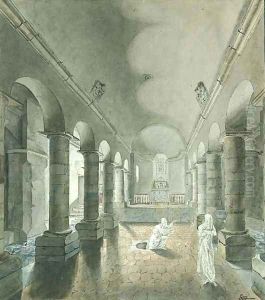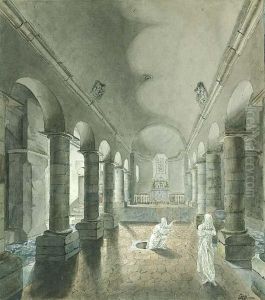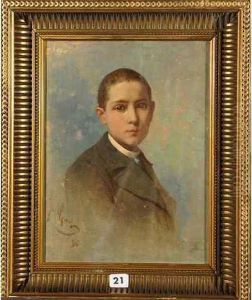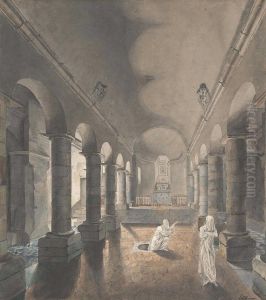Jean-Joseph-Pascal Gay Paintings
Jean-Joseph-Pascal Gay was a French painter and draughtsman born in 1751. His life and career unfolded during a period of significant political and social upheaval, which included the French Revolution. Despite the tumultuous times, Gay managed to earn his reputation primarily as a portraitist. Although not as widely recognized as some of his contemporaries, his work provides a valuable glimpse into the artistic styles and social mores of his era.
Gay studied under Joseph-Marie Vien, a French painter who is often credited with pioneering the transition from the elaborate Rococo style to the more sober and classicizing Neoclassical style. Under Vien's tutelage, Gay honed his skills and developed a keen sense for portraiture, which would become his mainstay. Although the details of his career are not extensively documented, it is known that he exhibited at the Paris Salon, an official art exhibition of the Académie des Beaux-Arts in Paris.
The French Revolution brought about radical changes in the art world just as it did in other spheres of French society. Artists like Gay found themselves navigating new political realities and patronage systems. Despite these challenges, Gay continued to work and exhibit his art. His style reflects the Neoclassical ideals of the time, favoring clear lines, a subdued palette, and a focus on historical and moralistic themes that were in vogue during the late 18th century.
Jean-Joseph-Pascal Gay's death in 1795 came at the age of 44, a relatively young age that cut short what could have been a more prolific period of artistic production. His contributions to French art, particularly portraiture, are noted for their adherence to the Neoclassical style and for their portrayal of individuals during a time of great societal change. Though his oeuvre may not be as extensive as some of his peers, the works he left behind continue to offer insights into the aesthetics and cultural currents of his time.



